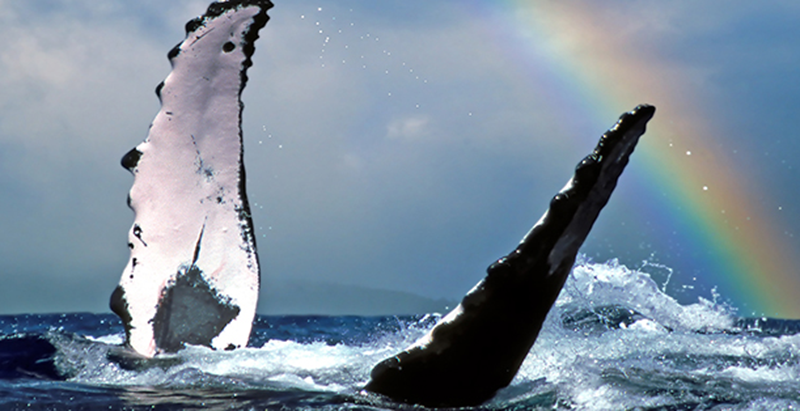Is swimming with humpback whales on your Bucket List? Yes?
Then this featured dream trip is the one for you.
There are only a few places in the world that you can get up close and personal with these majestic creatures and luckily for us most of them are just a stone’s throw from New Zealand.
Cathy, who recently returned from swimming with humpback whales in Tonga, says it is a memory she will never forget.
So, why not experience this magic for yourself now?
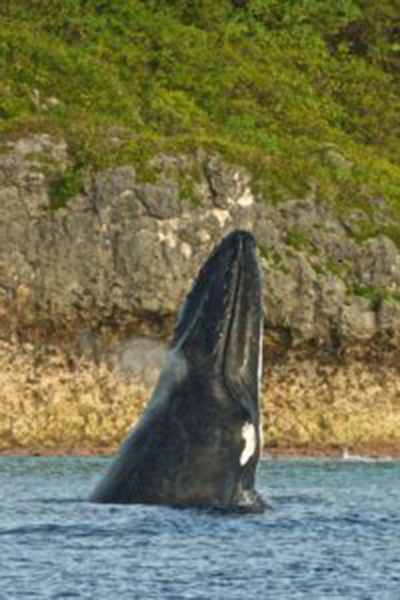
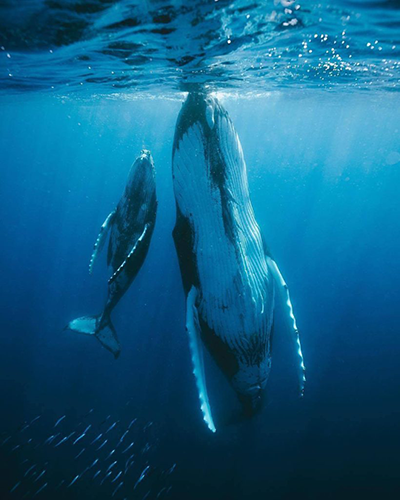
Here are a few quick facts about the Humpback Whale
The humpback whale is a species of baleen whale. The baleen plates have bristles attached to them that capture small prey like small fish, krill, salmon, herring and mackerel. Humpbacks have from 270 to 400 darkly colored baleen plates on each side of their mouths. Fully grown humpback whale males are slightly smaller (43 to 46 feet) than females (49 to 52 feet). Newborn humpback calves are about the length of their mother’s head. At birth, calves are about 20 feet long and weigh 2 short tons (most calves weigh about 1/2 ton). They nurse for about six months.
Like a human fingerprint, the tail of each humpback whale is unique. Another characteristic that is unique to baleen whales such as the humpback is the presence of two blowholes on top of their heads. Humpback whales are known for their beautiful songs, which are often heard during mating season. In addition to being used in their mating rituals, whale songs are also believed to be used as other forms of communication, though this is poorly understood. The songs are described as a combination of moans, cries and howls and can be heard underwater for many miles. During the humpbacks’ feeding season, these whales hunt using a technique known as bubble net fishing — a group of humpback whales swim around their prey in a circle and blow bubbles around their prey in order to herd the fish into a tight ball.
Swimming with humpback whales in Niue
Niue is a large upraised coral atoll, it is a standalone island in the centre of a triangle of nations made up of Tonga, Samoa and the Cook Island, located 2400km north east of New Zealand. The island’s isolation and coral origins create an exciting coastline, there are no rivers or lakes which ensures crystal clear water year round.
The whole island is dotted with a myriad of caves, sheltered rocky coves and secret beaches, some of which have yet to be explored. The Huvalu Rainforest is home to some amazing indigenous trees and has been designated as a Conservation Area to protect and conserve the islands primary rainforest and natural fauna and flora.
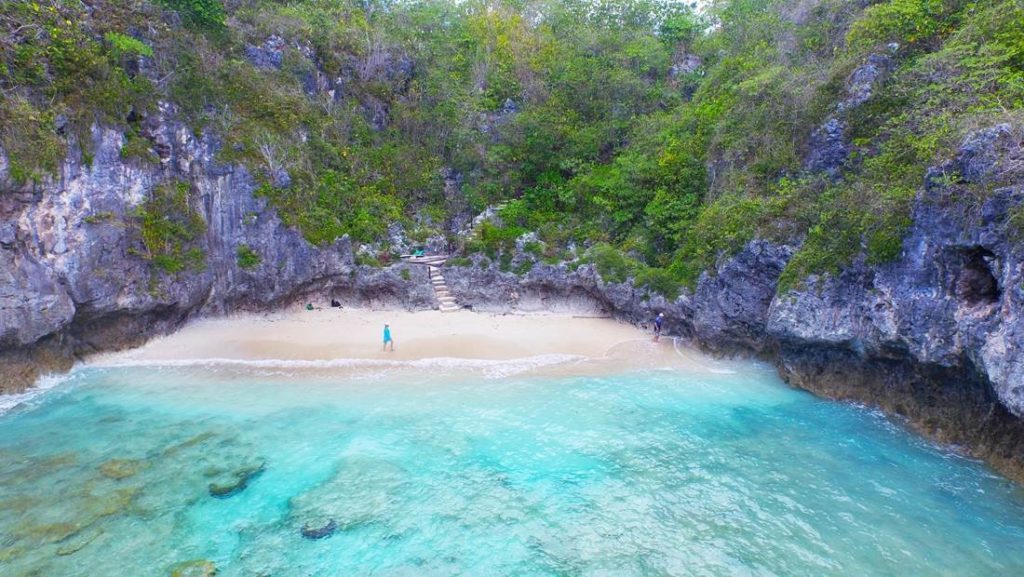
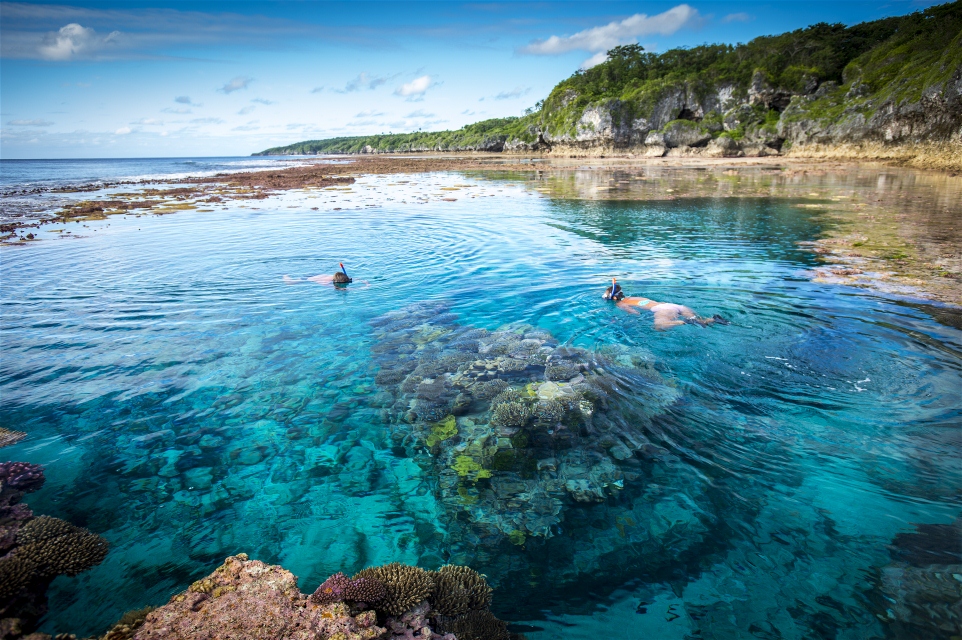
Best time for swimming with humpback whales in Niue: July to October
Niue Island is on a humpback migratory path, so each year between July and October the island is fortunate to receive an influx of the gentle giants who calve and nurse their young in Niue’s deep, warm waters and sheltered bays.
At night, you can sometimes hear the whales slapping their giant fins against the water and you may even be kept awake by their calls, unlike anywhere else in the world – they can come that close because the water is so deep.
For those not so keen on swimming with humpback whales, these gentle giants can be viewed from the land at dedicated viewing areas, where their gymnastics provide a spectacular show -sometimes only 20 metres from shore.
Niue is a signatory to the South Pacific Whale Sanctuary and fully supports the conservation of whales, so all interactions are conducted from a distance that respects their privacy and your safety.
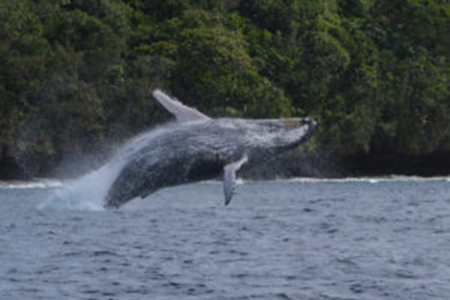
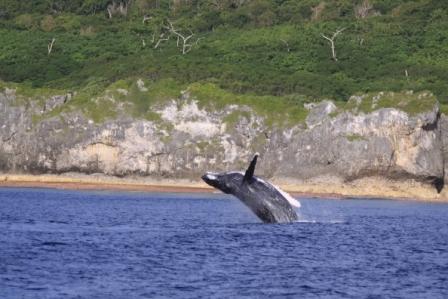
Michelle recently holidayed in Niue and absolutely raves about it, so contact Michelle for everything you need to know about Niue.
We recommend you book early for next year’s humpback whale season. Contact Cathy or Michelle at Bucket List Travel for up to date pricing for your Niue whale adventure.
Swimming with Humpback whales in Tonga
Holiday makers are not the only ones to return to Tonga’s shores on a regular basis. After a long 5000 km journey from their feeding grounds in the icy krill-laden depths of Antarctica, southern humpback whales take shelter in the tropical reef-protected waters of Tonga to give birth and nurse their young in the same place they were conceived 11 months earlier.
Pregnant mothers arrive first in mid-July to give birth in warm, shallow water, which is easier and safer for newborn babies as it’s free from the main predators of baby whales, orcas and big sharks. Sometimes the mothers are accompanied by male escorts who are hoping to mate with her that season or the next. By the end of July the season is in full swing, with the maximum number of whales present throughout August. By mid-September the population is beginning to thin out as individuals begin the long migration back to the feeding grounds. While some humpback whales do remain in Tonga well into October, the density is much reduced.
The high number of whales visiting Tongan waters at this time of year means there are plenty of opportunities to see and swim with them. As most of the whales are mothers with calves, operators take great care not to intrude too heavily on these wild animals.
Best time to swim with humpback whales in Tonga: July to October
You can either swim with the humpback whales from the main Island of Tongatapu, the Island of Vava’u or some of the other tourist Islands in Tonga. People travel from all around the world to the Island of Vava’u to experience these majestic animals in their natural environment as they care for their newly-born calves and breed for another generation.
You can also take advantage of Vava’u’s worldwide reputation as a superbly sheltered yachting playground. Explore hidden coves and atolls with a friendly local skipper or take charge yourself to make the most of Tonga’s steady trade winds. Accept the challenge of a game fishing expedition, catching or tagging the mighty blue marlin and other impressive species. Below the waves, Vava’u’s beauty shines, with crystal visibility of up to 30 metres illuminating remote sea caves and history-laden shipwrecks. Many snorkelling locations make exploring Vavau’s underwater majesty accessible for visitors of all abilities.
Cathy has recently returned from swimming with the humpback whales in Tonga and all she can say is “it’s hard to describe how it feels – magical, spectacular, breath taking; something that you need to experience for yourself”.
We recommend you book early for next year’s humpback whale season. Contact Cathy or Michelle at Bucket List Travel for up to date pricing for your Tonga whale adventure.
Humpback whales in Hawaii
Best time for swimming with humpback whales in Hawaii: February to March
Although the first whales to arrive in Hawaiian waters are generally sighted in October or November, it is not until February-March that we can count on seeing them. After that, sightings taper off until the last ones leave in June. If you are serious about seeing humpback whales in their Hawaiian mating and calving grounds, the last couple weeks in February and the whole month of March are therefore the best times.
North Pacific Humpback Whales leave the icy waters around Alaska swimming practically non-stop for nearly 6 to 8 weeks before reaching their Hawaiian winter home, where they mate, give birth, and nurture their calves. Their annual migration of about 6,000 miles is one of the longest of any mammal. Mothers can be seen breaching alongside their calves and males can be seen competing with one another for females in fierce head-to-head battles.
Beginning in mid to late November, mother whales nursing their calves usually arrive first in Hawai’i. Then juveniles and newly weaned yearlings come. The adult males arrive next, double the number of adult females who follow. Finally, the pregnant females arrive, after feeding up to the last minute in Alaska.
Maui sees the greatest concentration of humpback whales during their season near the island, however humpbacks can be spotted across all of the Hawaiian Islands.
Maui, known also as ‘The Valley Isle’, is the second largest Hawaiian island. The island beloved for its world-famous beaches, the sacred lao Valley, farm-to-table cuisine and the magnificent sunrise and sunset from Haleakala.
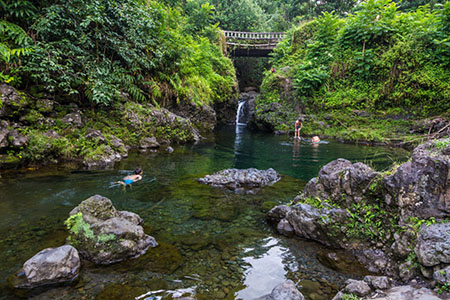
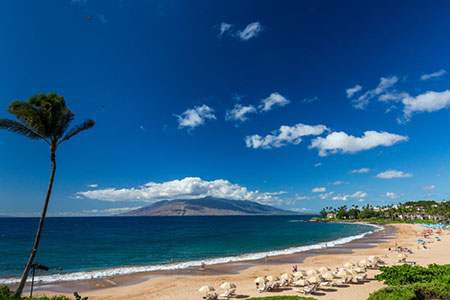
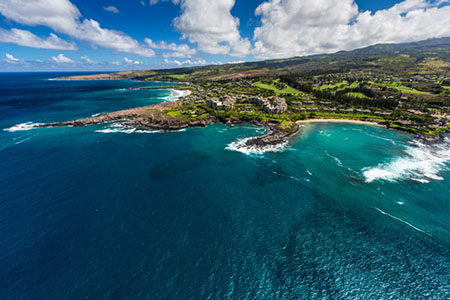
Michelle has been luckily enough to travel to Hawaii and Maui multiple times so can help you plan your perfect Hawaii escape.
We recommend you book early for next year’s humpback whale season. Contact Cathy or Michelle at Bucket List Travel for up to date pricing for your Hawaii whale adventure.
Swimming with humpback whales in Moorea, Tahiti
Best time for swimming with humpback whales in Moorea: July to September
Humpback Whales are seasonal visitors to Moorea, French Polynesia. From July to early November the Humpback Whales can be found close to the outer reefs to give birth or nurse their young after an incredible journey of nearly 6,000 kilometers from Antarctica. Most of the time, they mate on the way, before arriving in Tahiti at the beginning of July. In Polynesia, the “whale season” lasts about four months (from July to November).
Whales fast throughout this period that they entirely devote to giving birth to their fragile babies, then to feeding, watching and protecting them. At the end of the southern spring, they return to the Antarctic Ocean that they usually reach in about a month and a half. It is only on finding the polar waters after an odyssey of nearly 12,000 kilometers, that whales break the fast by ingesting incredible amounts of krill which will allow them to reconstitute their precious fat mass.
The lagoon and ocean surrounding Moorea is warm and clear, making it one of the best places in the world to swim with and observe humpback whales in the mating and nursery areas. French Polynesia declared itself a Marine Mammal Sanctuary in 2002 offering protection to all of the 16 species of Whales and Dolphins found here.
Moorea is only a few minutes from the island of Papeete, Tahiti by plane, and only thirty minutes by high-speed catamaran, Moorea soars magically out of the ocean in an explosion of green velvet – what you would imagine a South Seas island to be.
A wide, shallow lagoon surrounds the island’s vertical mountains where poetic threads of waterfalls tumble down fern-softened cliffs. Peaceful meadows flanked by pinnacles of green will fill your senses and renew your belief in the majesty of nature. Pastel-painted houses surrounded by gardens of hibiscus and birds of paradise, circle the island in a fantasy of happy, yet simple villages.
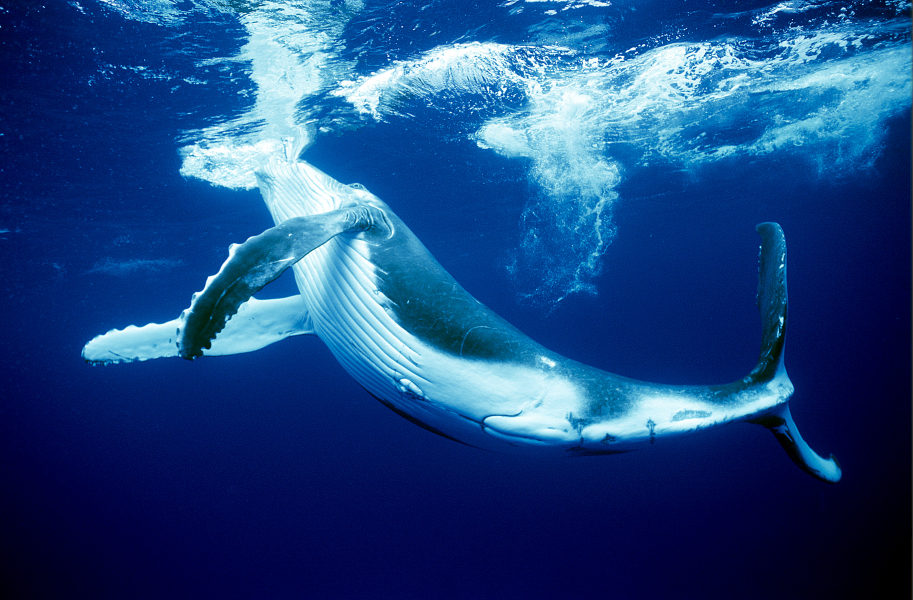
We recommend you book early for next year’s humpback whale season. Contact Cathy or Michelle at Bucket List Travel for up to date pricing for your Tahiti whale adventure.
For further information about any of these destinations and swimming with the whale tours contact Cathy or Michelle at Bucket List Travel today!

